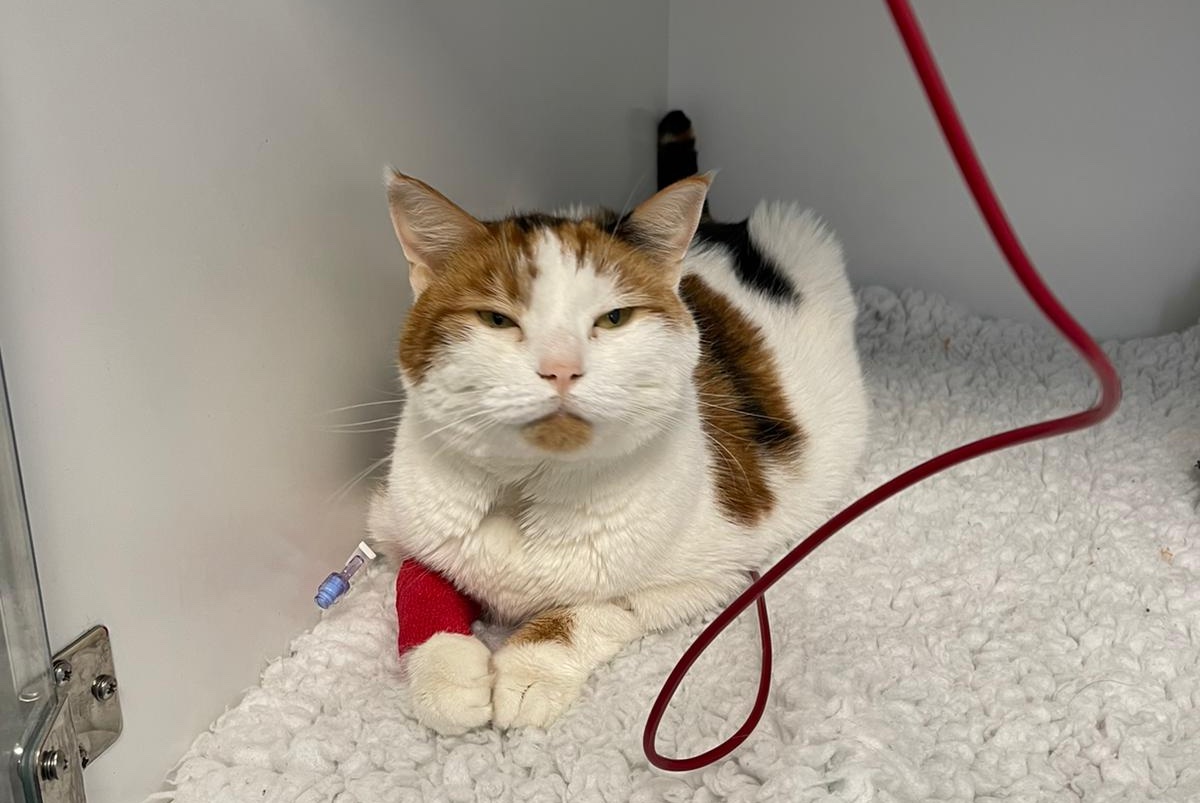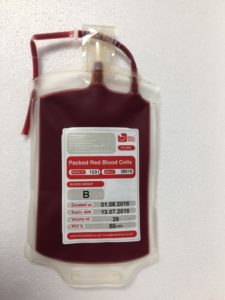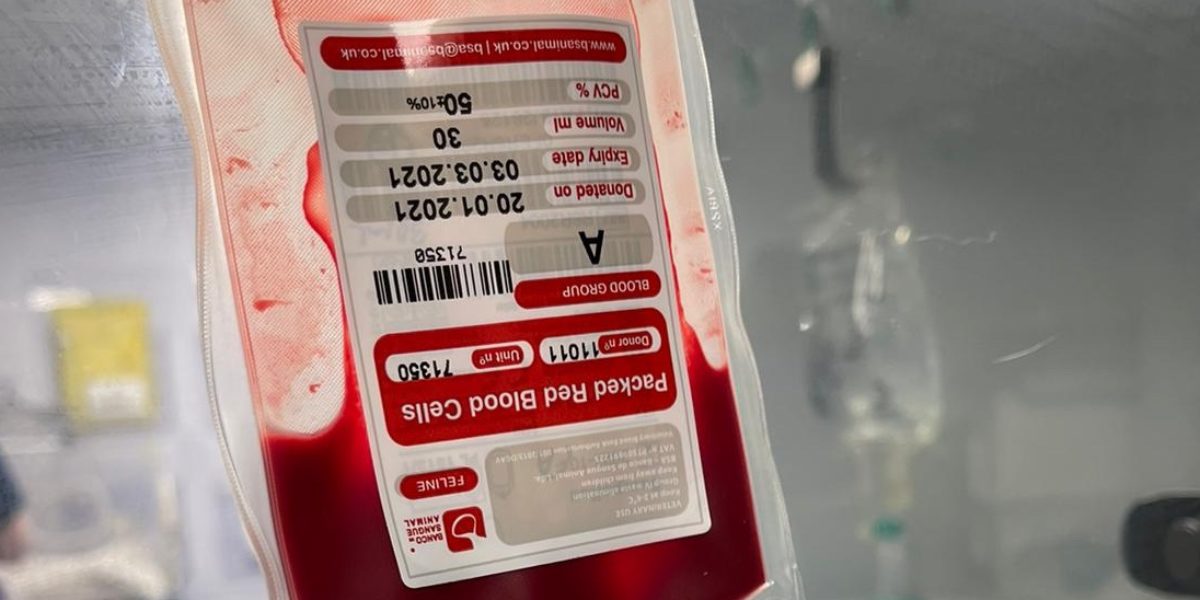Blood donation is common in people, and many of us are donors. Similarly in dogs and cats there is a need for transfusion of blood or blood products in certain illnesses where it can be lifesaving.
However, unlike ourselves, cats cannot volunteer as blood donors, we are doing this on their behalf, and this raises several concerns as both blood collection and transfusion are not simple procedures. It is important that donors are fully screened, and cats receiving blood or blood product (recipients) are treated appropriately to aid recovery. International Cat Care and its veterinary division, The International Society of Feline Medicine (ISFM) have created guidelines and information for both veterinary professionals and caregivers of both potential donors and recipients.
Guidelines for veterinary professionals
In 2021, ISFM published consensus guidelines on the collection and administration of blood and blood products in cats. You can find this comprehensive document here. The guidelines contain information on blood groups, blood typing, collection of blood, and practical information on how to administer the blood or blood product and monitor for and manage any adverse reactions. They also contain very important information on which cats should be considered for a transfusion and which cats may be suitable to act as donors to ensure the best welfare outcomes for both patients.
A precious resource
Blood/blood products are precious resources. The clinician therefore has a responsibly to use the blood carefully, and not on cases with a very poor prognosis which are unlikely to survive or are likely to be imminently euthanased. Additionally, transfusion of blood products carries risks to the recipient, so should not be given without evidence of a clear benefit to the patient. In this situation, alternative supportive medications should be considered while prognosis is examined and discussed. There are multiple considerations when planning a feline blood or blood product transfusion that must be taken into account by the attending clinician, both clinical and non-clinical. What can be lifesaving, can have a negative effect on the donor, and the recipient if performed incorrectly. It is our responsibility to care appropriately for both parties with attention on both mental and physical wellbeing.

A cat receiving a blood transfusion at a veterinary clinic. Image courtesy of Dr Sam Taylor.
Information for caregivers of potential donors and recipients
With publication of the veterinary guidelines, ISFM also provided an information guide for caregivers on blood collection and transfusion and this document can be found here. This document provides caregivers with advice when considering offering their cat for blood collection as well as information on blood groups and what to expect when cats donate blood or receive a transfusion so they can make the most appropriate decision for their individual cat.
Feline blood and blood products
Around the world there is great variation in the availability of blood products for cats. In some countries, blood ‘banks’ exist to store blood from cats, ready to be transported to veterinary clinics and given to recipients. Such blood banks may also process collected blood into blood products such as ‘packed red cells’ containing just the red blood cells and other products such as plasma or platelets. In other countries and situations, a cat is sourced by the veterinary clinic and used as a donor. The availability of blood and blood products may depend on local regulations and regional rules must always be followed. Importantly, cats used for blood collection must always be carefully screened for suitability and cared for appropriately to optimise their safety. Clinicians must be aware of the source of the donors and the level of care they receive. Collecting blood from cats must be performed by experienced staff, proficient in the technique to avoid harm to the donor, either physical or emotional, wherever the blood is obtained from.

A bag of feline packed red blood cells. Image courtesy of Dr Sam Taylor.
Collection of blood from cats
Feline blood donors may be owned cats, volunteered by their caregivers, or in some circumstances unowned cats. It is vital that the donor is assessed for suitability including assessment of temperament by experienced staff. Additionally, the caregivers of donor cats must be fully informed of the process and risks so they can provide informed consent. Not every cat a suitable for blood collection. Criteria for suitability are detailed in the ISFM guidelines and listed below, but also vary according to region rules and regulations:
- Is healthy with no sign of illness
- Is between one and eight years of age
- Weighs more than 4.5kg (but not overweight)
- Has a calm temperament and is not unduly stressed by the veterinary environment or transport to the clinic
- Is up to date with vaccination, worming and external parasite control
- Is currently not on any medications
- Ideally lives indoors (and so is less exposed to infectious diseases)
- Has no history of having received a blood transfusion
- Has normal results on blood tests
- Tests negative for feline immunodeficiency virus (FIV) and feline leukaemia virus (FeLV)
- Is negative for other infectious diseases (may vary according to geographic location)
Reasons why cats may need a blood transfusion
There are a variety of reasons a cat might need a blood transfusion. The most common is that the recipient cat is anaemic, which means they don’t have the normal number of red blood cells. Causes of anaemia include:
- Bleeding, for example due to a road traffic accident, but can also be due to surgery or a clotting problem
- Failure to make enough red blood cells due to a bone marrow problem
- Destruction of the red blood cells for various reasons
Depending on the cause and duration of the anaemia, cats can be suddenly unwell, collapsed and weak, or show signs of tiredness, go off their food, and even lick or eat non-food items like cat litter (pica). Blood tests performed at the veterinary clinic will reveal a low red blood cell count and further investigations may be needed to determine the cause.

Pale gums (mucous membranes) seen in an anaemic cat. Image courtesy of Dr Sam Taylor.
Feline blood groups
Cats have blood groups, but they are quite different to human blood groups or dog blood groups. Cats are either type A, B or AB. Type A or B cats must receive a donation from a cat of the same blood type, or a reaction will occur which could be fatal. Type AB cats ideally receive type AB blood, but can have a type A transfusion if needed. There may be other unknown blood groups and so ‘cross-matching’ is recommended, where blood from the donor and recipient cat are mixed in the clinic or external laboratory to test for a reaction before a transfusion. Blood typing can be performed readily in the veterinary clinic, or for blood banks, units are sold according to the blood group.
Thank you for visiting our website, we hope you have found our information useful.
All our advice is freely accessible to everyone, wherever you are in the world. However, as a charity, we need your support to enable us to keep delivering high quality and up to date information for everyone. Please consider making a contribution, big or small, to keep our content free, accurate and relevant.
Support International Cat Care from as little £3
Thank you.
Donate Now


